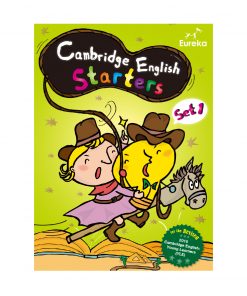Find Someone
Materials: None
Dynamic: Whole class
Procedure:
- Push the tables and chairs to the back of the classroom leaving an open space for the students to gather at the centre.
- Ask the students to introduce themselves before performing each task with their partner. Then, provide them a guideline for partners that they should be looking for.
- Based on a statement, they need to find someone that matches the criteria.
- There will be a different partner every time.
Examples:
- Find someone who wears glasses
- Find someone who can sing
- Find someone who can do 5 jumping jacks with you
- Find someone who has siblings, ask them to share their names with you
- Find someone who can juggle. Have them prove it
- Find someone who shares the same birthday month as yours
Fine Line
Materials: None
Dynamic: 3 Groups
Procedure:
- Have students of each group line-up in order of height.
- All students of a group rise up their hands once the ordering is completed.
- The first group can get 1 mark. Count the marks on the board
- Repeat this game, but with different ordering criteria for example:
– Reverse height order
– Age
– Month of birth
– Alphabetically by given name, middle name or surname
– Shoe size
– Length of arm
Category Race
Materials: Papers, pens, white board, markers
Dynamic: Groups of 4
Procedure:
- Divide the students into teams of no more than four per group.
- Have students draw six columns on their paper and write a category at the top of each column.
- Teachers can choose categories (e.g. verbs, prepositions, parts of speech, countable/uncountable nouns, etc).
- Choose a random letter and write it on the board.
- Allow students to write down a word for each category that starts with that letter. The first team to finish wins that round.
Two Truths and One Lie
Materials: Scrap paper
Dynamic: Individuals / Whole class
Procedure:
- Teacher tells the class that each person will state two truths and one lie. The rest of the participants have to guess which statement is a lie.
- You may give examples relating to yourself (write one lie and two truths on the board about yourself and get students to guess which is the lie).
- Allow the students a minute to think about their statements. Ask for volunteers to share their statements until all students have shared.
- This could be turned into a grammatically exercise using tenses. E.g. Can tell them they should write their sentences about something that applies to the past.
Example:
‘I am colour blind. I have never been ice skating. I can play the guitar.’
(Truths: I have never been ice skating. I can play the guitar. Lie: I am colour blind.)
Based on tenses: Something that is true about the past.
- I had a pet fish when I was five.
- My mum used to be a nurse.
- I lived in England when I was younger.
Clap on 5
Materials: None
Dynamic: Whole class
Procedure:
- Sit in circle.
- The teacher will start by saying ‘1’, then the student on the right says ‘2’ and the counting continues to the next student and round the circle as many times as possible.
- When a number is a multiple of ‘5’, the student which the number falls on must CLAP and not say the number.
- (Demonstrate) Eg.
1-2-3-4-CLAP-6-7-8-9-CLAP-11-12-13-14-CLAP - If the person does not clap and says the number, the counting has to start from the beginning.
- If multiple of 5 is too easy, you can change it to any multiple of your choice like the number of 7
1-2-3-4-5-6-CLAP-8-9-10-11-12-13-CLAP
Pictionary
Materials: Pens, timer
Dynamic: Whole class
Procedure:
- Prepare a stopwatch or timer.
- Divide class into groups of 5. Each group designates a drawer.
- The drawers then play rock, paper, scissors to see in which order the groups play in.
- The first group comes up. The drawer stands at the board with a wipeable marker/chalk. The teacher shows them a word and the student tries to draw it. The rest of the group must guess the word from the drawing.
- Each group is given 2 minutes to draw and guess as many words as they can.
- Give clues to drawer, if they are not sure what it is, or they can say pass.
- Tally up the scores as you go along.
- Continue in the same vain until all groups have taken a turn.
- Add up all the scores to see which group won.
- Can be used to test countable/uncountable or single/plural nouns.
Simon Says
Materials: None
Dynamic: Whole class
Procedure:
- Make sure there is room in the class.
- Students should listen carefully to the teacher’s instructions.
- If the teacher gives a direction which starts with ‘Simon says…’, then the student should follow the instruction. If the sentence just starts with the verb (imperative), students should stay still
- If someone fails to follow or do the wrong move, they will sit out of the game.
- See which student will be the last one standing.
- Good activity to introduce imperatives.
Chinese Whispers
Materials: N/A
Dynamic: 2 – 3 Groups
Procedure:
- Each team gets in a line in front to back.
- The first player in each team is given the same tongue twister (a sentence) or vocabulary for young students.
- They must then try and recite/whisper it to the person in front, it continues until it reaches the last player.
- The team whose last player can recite the sentence most accurately wins. Several rounds can be played.
Sentence Race
Materials: Pens
Dynamic: 2 Groups
Procedure:
- Tell students they will be competing to see which team is the first to complete a group sentence.
- Next, divide the class into two teams. If the group contains an uneven number, one person may compete twice.
- The teams then line up 10 feet from their board. After giving the first person in each team’s line a piece of chalk or marker, explain the rules of the game.
- The rules are: Each team member needs to add one word to the sentence. Players take turns. After they go to the board and write one word, they run back to give the next player the marker, and then go to the end of the line. (The sentence must contain the same number of words as there are members on the team.)
- A player may not add a word between words that have already been written.
- The winning group is the one with the most accurate sentence written in the shortest time.
Brainstorming
Materials: Board
Dynamic: Whole class
Procedure:
- Tell students what they will be learning.
- Then get them to brainstorm as a class, words relating to the topic.
- For example, if the lesson is on subject pronouns, they could think of what subject pronouns they know If the lesson is on articles, you could write ‘a’, ‘an’ and ‘the’ on the board and get students to think of words that go with it (e.g. an apple, a bed, the sun).
Jumbled Sentences
Materials: Board
Dynamic: 2 – 3 Groups
Procedure:
- Think of some sentences prior to class (these can be as short or as long as you want depending on the level and what has been taught).
- For higher-level students, think of sentences with a range of parts of speech/grammar items (e.g. adverbs of frequency, time signifiers, adjectives, etc).
- Divide the class into 2 or 3 groups.
- Explain that you will write a sentence on the board, but it is jumbled up (e.g. name my John is).
- Then, one player from each team comes up and tries to reorder the sentence so it makes sense.
- You may need to remind them that a sentence always start with a capital letter and ends with a full stop (.).
- The first student to do it correctly wins a point for the team.
- Repeat until each person in each team has had a turn.
- Tally up the scores to see which team has the most points.
The Missing Word
Materials: None
Dynamic: Whole class or 3 – 4 groups
Procedure:
- Find a group of compound words or collocations which share a common word, such as bedroom, bathroom, classroom, double room.
- Give students one of the word/collocations parts, e.g. bed, continue to add to the list writing bath, class, double, etc., until they successfully guess the word, e.g. room.
- This can be done in groups, to see which group can find the word the quickest.
Other examples:
- ear, boxing, wedding, gold, diamond (ring)
- police, bus, train, fire, radio, petrol (station)
- green, wife, work, hold, farm, detached, terrace (house)
- car, country, national, wildlife, bench, warden (park)
- burger, cake, cream, slice, omelette, sandwich, cheddar (cheese)
Name Tags
Materials: A4 papers x number of students
Dynamic: Whole class
Procedure:
- Give students an A4 paper and show them how to tri-fold it to make a nametag that can sit on their desk.
- Ask them to write their names.
- Make it a routine to put in on their desks every lesson! For courses, ask them to stick the name tag in their textbook at the end of every class so that they have it ready next time.
Differentiation:
Harder: Ask them to write an acrostic poem with their name (giving yours as an example)
V – very happy
E – energetic
R – reading (I like reading) etc.
Easier: lead them through drawing different things in the corners ; “Colour the top left corner with your favourite colour” in the bottom right, draw your favourite animal.
Remarks: Especially good for having a visible aid to quick assess/remember student’s ability level/personalities (based on the types of vocabulary they used, the way they decorated, etc.)






